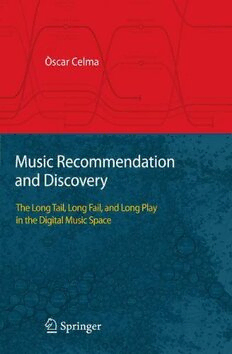
Music Recommendation and Discovery: The Long Tail, Long Fail, and Long Play in the Digital Music Space PDF
204 Pages·2010·2.791 MB·English
Most books are stored in the elastic cloud where traffic is expensive. For this reason, we have a limit on daily download.
Preview Music Recommendation and Discovery: The Long Tail, Long Fail, and Long Play in the Digital Music Space
Description:
With so much more music available these days, traditional ways of finding music have diminished. Today radio shows are often programmed by large corporations that create playlists drawn from a limited pool of tracks. Similarly, record stores have been replaced by big-box retailers that have ever-shrinking music departments. Instead of relying on DJs, record-store clerks or their friends for music recommendations, listeners are turning to machines to guide them to new music.In this book, Òscar Celma guides us through the world of automatic music recommendation. He describes how music recommenders work, explores some of the limitations seen in current recommenders, offers techniques for evaluating the effectiveness of music recommendations and demonstrates how to build effective recommenders by offering two real-world recommender examples. He emphasizes the user's perceived quality, rather than the system's predictive accuracy when providing recommendations, thus allowing users to discover new music by exploiting the long tail of popularity and promoting novel and relevant material ("non-obvious recommendations"). In order to reach out into the long tail, he needs to weave techniques from complex network analysis and music information retrieval.Aimed at final-year-undergraduate and graduate students working on recommender systems or music information retrieval, this book presents the state of the art of all the different techniques used to recommend items, focusing on the music domain as the underlying application.
See more
The list of books you might like
Most books are stored in the elastic cloud where traffic is expensive. For this reason, we have a limit on daily download.
